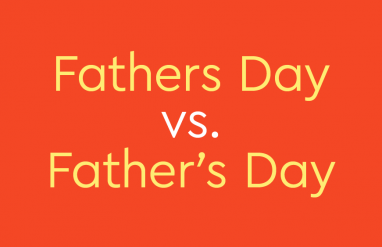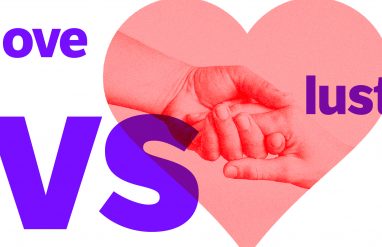William is a very smart guy. He has studied Newtonian physics. He knows everything there is to know about Gothic architecture. He is well versed in European, Asian, and African history. However, William doesn’t know his grammar and can never use adjectives correctly.
You don’t want to be like William. You want to be the grammar expert who tells him that adjectives are words we use to modify nouns and pronouns. You can impress William by telling him all about the type of adjective that we use to describe his interests: the proper adjective. Before you can do that, though, you’ll have to learn more about them yourself.
What is a proper adjective?
A proper adjective is an adjective that comes from a proper noun. Before you read any further, it might be a good idea to review our great guide to proper nouns. In brief, proper nouns are nouns that refer to unique people, places, and things. For example, the nouns Isaac Newton, Russia, and Twitter are all proper nouns. In general, we use proper adjectives to say that something originates from a specific place or is related to a specific person. For example, something that originates from Japan is said to be Japanese and the Victorian era was the period of history during which Queen Victoria of England reigned.
For the most part, proper nouns are capitalized regardless of where they appear in a sentence. Because proper adjectives come from proper nouns, they follow this same grammatical rule. For example, the proper adjective Mexican comes from the proper noun Mexico and would be used in a sentence like The new professor specializes in Mexican literature. As you can see, the proper adjective is capitalized even though it appears in the middle of the sentence.
List of proper adjectives
In general, most proper adjectives come from the names of people or places:
- People: Elizabethan, Victorian, Napoleonic, Christian, Buddhist, Shakespearean, Edwardian, Maoist, Jacksonian, Kafkaesque, Confucian
- Places: Spanish, American, Japanese, Chinese, Australian, Chilean, Norwegian, Jamaican, Bulgarian, Iraqi, Afghan, Haitian, African, European
There are some adjectives that are based on people and places that may not be capitalized if they are used as more general words. These include adjectives such as herculean, spartan, draconian, and titanic.
Where do you include a proper adjective in a sentence?
Like most other adjectives, proper adjectives can be used either directly before the noun/pronoun they modify or as a subject complement of a sentence when used with a linking verb.
- This week we are learning about Ugandan history.
- Roman architecture is beautiful.
- Researchers thought the artifacts might be Chinese in origin.
- My father is Albanian, and my mother is Polish.
Learn how to tell the difference between subject and predicates here.
Proper adjective examples in a sentence
Each of the following sentences shows how we use proper adjectives in sentences.
Example #1
- She bought several boxes of Swiss chocolate. (The proper adjective Swiss modifies the noun chocolate and states that the chocolate came from Switzerland.)
Example #2
- He helped me learn Euclidean geometry. (The proper adjective Euclidean modifies the noun geometry and indicates that this field of geometry was based on the theorems of the Greek mathematician Euclid.)
Example #3
- I love it when horror stories have Lovecraftian themes. (The proper adjective Lovecraftian modifies the noun themes and suggests the themes are similar to those used by horror writer H.P. Lovecraft.)
Proper adjective rules & best practices
As mentioned earlier, the main rule to remember is that proper adjectives are capitalized regardless of where they appear in a sentence.
❌ Incorrect: Our family is jewish.
✅ Correct: Our family is Jewish.
If you use a prefix with a proper noun, the prefix itself isn’t capitalized, but the proper adjective still is:
- The politician was accused of having an anti-Hungarian foreign policy.
The exception to this rule is if the prefix also comes from a proper noun/adjective:
- He was trained in Greco-Roman wrestling. (Greco– is a prefix that comes from the proper adjective Greek.)
Do you know how to identify compound adjectives? Dive into the details on them here.
Beyond this rule, proper adjectives behave much the same as any other type of adjective. Remember, proper adjectives are still adjectives. This means that they are only used to modify nouns and pronouns. Proper adjectives cannot be used as subjects or objects; you need a proper noun for that.
For example, we would say My brother lives in Brazil and not My brother lives in Brazilian. You should be aware that some words, such as the names of languages, can be used either as a proper noun or a proper adjective. For example, both the sentences I love French cuisine and French is her second language are grammatically correct.
One last thing to keep in mind is to make sure the proper adjective you are trying to use is an actual word. Often, it is not obvious what the proper adjective version of a proper noun is. For example, the proper adjective form of America is American but the proper adjective form of Canada is Canadian (not “Canadan”). If you are unsure, it is usually a good idea to check the Dictionary for the adjective form of a proper noun so that your writing is clear and mistake-free.
Your own writing will be proper as can be!
Confused about adjectives and their proper use? The Thesaurus.com Grammar Coach™ platform makes writing papers, essays, emails, and a whole lot more a whole lot easier. This writing tool uses machine learning technology uniquely designed to catch grammar as well as spelling errors. Its Synonym Swap will find the best nouns, adjectives, and more to help say what you really mean, guiding you toward clearer, stronger, writing.















